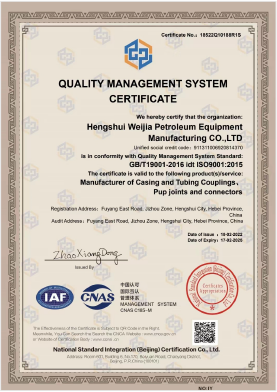- Afrikaans
- Albanian
- Amharic
- Arabic
- Armenian
- Azerbaijani
- Basque
- Belarusian
- Bengali
- Bosnian
- Bulgarian
- Catalan
- Cebuano
- Corsican
- Croatian
- Czech
- Danish
- Dutch
- English
- Esperanto
- Estonian
- Finnish
- French
- Frisian
- Galician
- Georgian
- German
- Greek
- Gujarati
- Haitian Creole
- hausa
- hawaiian
- Hebrew
- Hindi
- Miao
- Hungarian
- Icelandic
- igbo
- Indonesian
- irish
- Italian
- Japanese
- Javanese
- Kannada
- kazakh
- Khmer
- Rwandese
- Korean
- Kurdish
- Kyrgyz
- Lao
- Latin
- Latvian
- Lithuanian
- Luxembourgish
- Macedonian
- Malgashi
- Malay
- Malayalam
- Maltese
- Maori
- Marathi
- Mongolian
- Myanmar
- Nepali
- Norwegian
- Norwegian
- Occitan
- Pashto
- Persian
- Polish
- Portuguese
- Punjabi
- Romanian
- Russian
- Samoan
- Scottish Gaelic
- Serbian
- Sesotho
- Shona
- Sindhi
- Sinhala
- Slovak
- Slovenian
- Somali
- Spanish
- Sundanese
- Swahili
- Swedish
- Tagalog
- Tajik
- Tamil
- Tatar
- Telugu
- Thai
- Turkish
- Turkmen
- Ukrainian
- Urdu
- Uighur
- Uzbek
- Vietnamese
- Welsh
- Bantu
- Yiddish
- Yoruba
- Zulu
Understanding API Tubing Couplings for Oil and Gas Applications and Their Benefits
Understanding API Tubing Couplings Essential Components in Oil and Gas Drilling
In the oil and gas industry, efficiency and safety are paramount. One critical aspect that ensures the smooth operation of drilling processes is the use of tubing couplings, particularly those that adhere to the American Petroleum Institute (API) standards. Understanding API tubing couplings is vital for industry professionals looking to maintain high operational standards and reduce risks associated with drilling operations.
What are API Tubing Couplings?
API tubing couplings are specialized connectors used to join lengths of tubing in a wellbore, providing a strong, leak-proof connection that can withstand the high pressures and harsh environments characteristic of oil and gas extraction. These couplings are designed and manufactured to meet strict API standards, ensuring uniformity and reliability across the industry.
API tubing is typically made from carbon steel and is designed to carry fluids, such as oil and gas, from the well to the surface. The couplings serve as an indispensable link between the threaded ends of the tubing strings, ensuring they remain securely aligned and capable of withstanding significant mechanical stresses.
Key Features of API Tubing Couplings
1. Design and Construction API tubing couplings feature a threaded design that allows for easy attachment and detachment of tubing sections. Their internal and external threads are precision-engineered to ensure a tight fit, preventing leaks and loss of pressure during operations.
2. Standardization By adhering to API specifications, these couplings offer a level of standardization that is crucial for interoperability. This means that couplings manufactured by different producers can be used interchangeably, reducing downtime and logistical challenges in supply chain management.
3. Material Properties The materials used in the production of API tubing couplings are selected for their strength, corrosion resistance, and the ability to endure extreme temperatures and pressures. Common materials include high-strength carbon steels and specialized alloys that provide additional durability.
api tubing couplings

4. Variety of Sizes API tubing couplings come in various sizes and grades, accommodating different well conditions and operational requirements. The size and grade of the coupling are typically chosen based on the specific needs of the drilling project, including the depth of the well and the type of fluids being transported.
Importance of API Tubing Couplings in Drilling Operations
API tubing couplings are vital for several reasons
- Safety The integrity of the tubing system is crucial for safety in drilling operations. High-quality couplings reduce the risk of leaks, blowouts, and other hazardous incidents, protecting workers and the environment.
- Efficiency Efficient transfers of fluids from the well to the surface ensure optimal productivity. Robust couplings minimize the chances of downtime caused by equipment failure, thus maintaining a steady workflow.
- Cost-Effectiveness By preventing leaks and equipment failure, quality API couplings reduce maintenance and replacement costs in the long run. Investing in reliable couplings pays off in minimizing unplanned expenditures associated with operational disruptions.
Conclusion
In conclusion, API tubing couplings are foundational components in the oil and gas industry that ensure the safe and efficient extraction of resources. Their standardized design, material properties, and adaptability make them indispensable in maintaining the integrity of well operations. As the industry continues to evolve, the reliance on high-quality, API-compliant tubing couplings will remain steadfast, underpinning the ongoing quest for efficiency and safety in drilling operations. Understanding their significance allows industry professionals to make informed decisions that bolster the success of their projects and enhance overall operational performance.
-
Tubing Pup Joints: Essential Components for Oil and Gas OperationsNewsJul.10,2025
-
Pup Joints: Essential Components for Reliable Drilling OperationsNewsJul.10,2025
-
Pipe Couplings: Connecting Your World EfficientlyNewsJul.10,2025
-
Mastering Oilfield Operations with Quality Tubing and CasingNewsJul.10,2025
-
High-Quality Casing Couplings for Every NeedNewsJul.10,2025
-
Boost Your Drilling Efficiency with Premium Crossover Tools & Seating NipplesNewsJul.10,2025







